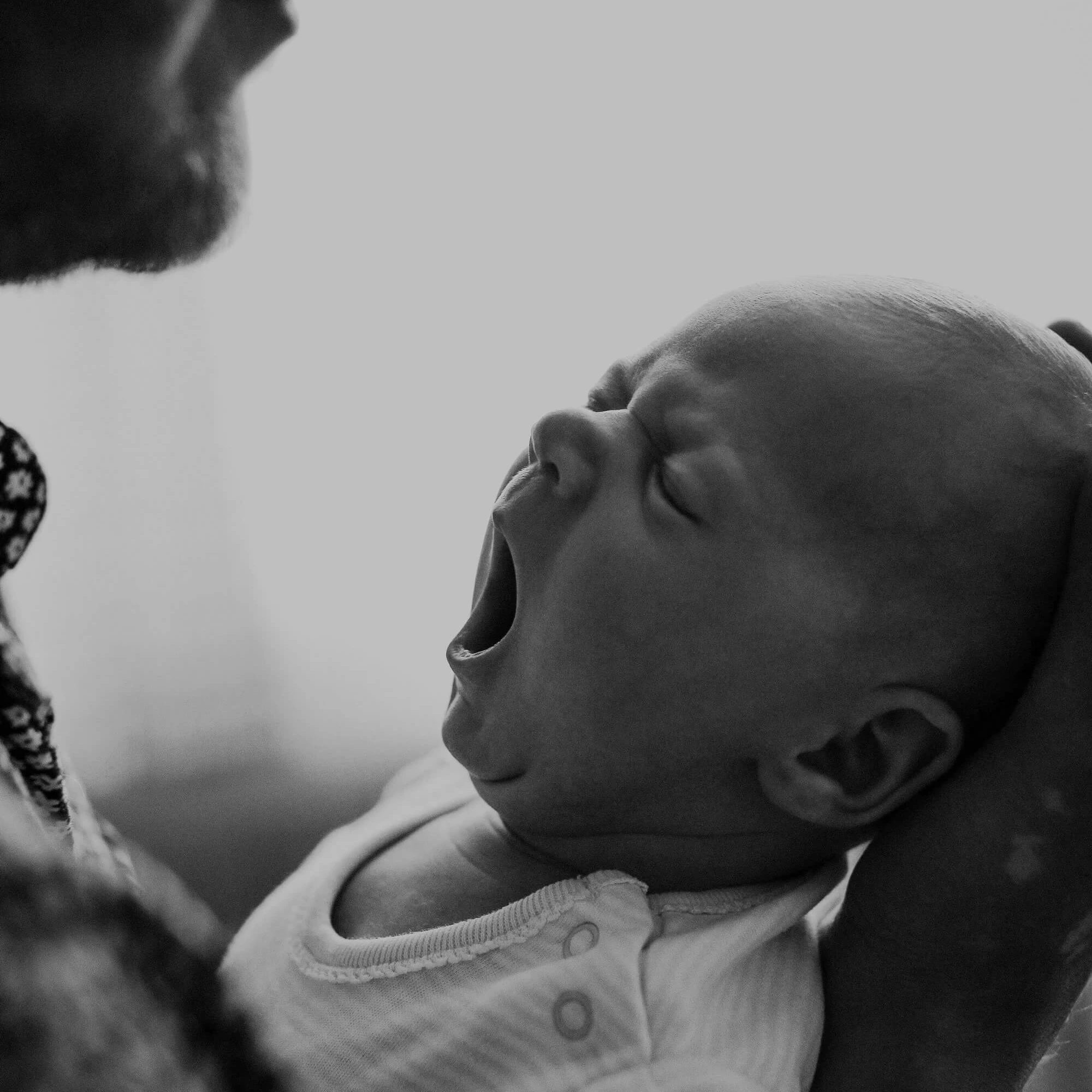White noise for baby sleep - why and how it works


Finding a working sleep routine for your baby (that meets your own needs for rest and recovery) can often be like puzzle of various routines and techniques. The role of white noise in this puzzle is typically to make bedtime easier, as well as to help reduce unnecessary wake-ups.
What is White Noise?
White noise, a tool supported by research to be effective in calming and lulling babies to sleep¹, is a sound that encompasses all or most audible frequencies at the same consistent level. In one study, 80% of newborns fell asleep within five minutes when exposed to white noise during bedtime, compared to only 25% who fell asleep without it². This sound can be generated by a parent making a "ssshhhhhhhh" sound, played through a white noise machine, or through a mobile or portable speaker.
How Can White Noise Help My Baby Sleep?
White noise and other sounds are believed to mimic the auditory environment of the womb, where it is never silent. Research indicates that the noise level in the womb can be quite high, ranging from 72-88 dB, which can have a calming effect compared to a quiet environment that might feel less secure. The continuous sound of white noise can also mask sudden noises in the room that could potentially wake the baby.
Using White Noise
White noise can be used for falling asleep and, if needed, continuously during naps and nighttime sleep. You can play it from your mobile device, directly or through a portable speaker, positioned away from the baby's crib. Remember to put your phone on silent and airplane mode if using it as the sound source. Ensure the volume is not too loud to avoid risking damage to your baby's hearing over time, though it can be temporarily increased to calm or soothe your baby before lowering it to a soft, continuous level. It might take some experimentation to find the type of noise or sound that works best for your baby. Apps like Napper offer a variety of sounds to try, including white, pink, brown, and blue noise.
White Noise vs. Pink Noise
While white noise typically refers to a static sound that might be unrecognizable or resemble that of household appliances or radio static, pink noise consists of natural and recognizable sounds such as rain, wind, waves, or rustling leaves. In Napper, you can find both white and pink noise, among other sounds developed for sleep.
Brown Noise for Babies
Brown noise, a variant of white noise with a lower frequency, has a deeper sound that many find more soothing, reminiscent of the deep roar of the sea. This type of noise is available in Napper’s library of sounds and lullabies.
Blue Noise for Babies
Blue noise is a type of white noise characterized by a frequency response that increases with frequency, making the higher frequencies more prominent, resulting in a sound that may be perceived as hissing or crackling. Blue noise can also be found in Napper’s sound and lullaby library.
Recommended Volume for White Noise
The American Academy of Pediatrics (AAP) recommends that the sound level should be below 50 dB from a distance of about 30 meters³. You can measure the sound level with a decibel-measuring app to get an idea of the volume.
When to Stop Using White Noise
There is no recommended age to cease using white noise or soothing sounds; the decision is up to the parent. Some choose to stop as their baby approaches two years old, but others continue beyond this age. White noise can also be beneficial for older children and many adults to support concentration and facilitate falling asleep.
1. Riedy SM, Smith MG, Rocha S, Basner M. Noise as a sleep aid: A systematic review. Sleep Med Rev. 2021 Feb;55:101385. doi: 10.1016/j.smrv.2020.101385., https://pubmed.ncbi.nlm.nih.gov/33007706/
2. Spencer, Moran, Lee, Talbert. White noise and sleep induction. ResearchGate. Published June 29, 2016., https://www.ncbi.nlm.nih.gov/pmc/articles/PMC1792397/
3. American Academy of Pediatrics. Infant Sleep Machines and Hazardous Sound Pressure Levels. Pediatrics. April 2014., https://publications.aap.org/pediatrics/article-abstract/133/4/677/32749/Infant-Sleep-Machines-and-Hazardous-Sound-Pressure?redirectedFrom=fulltext